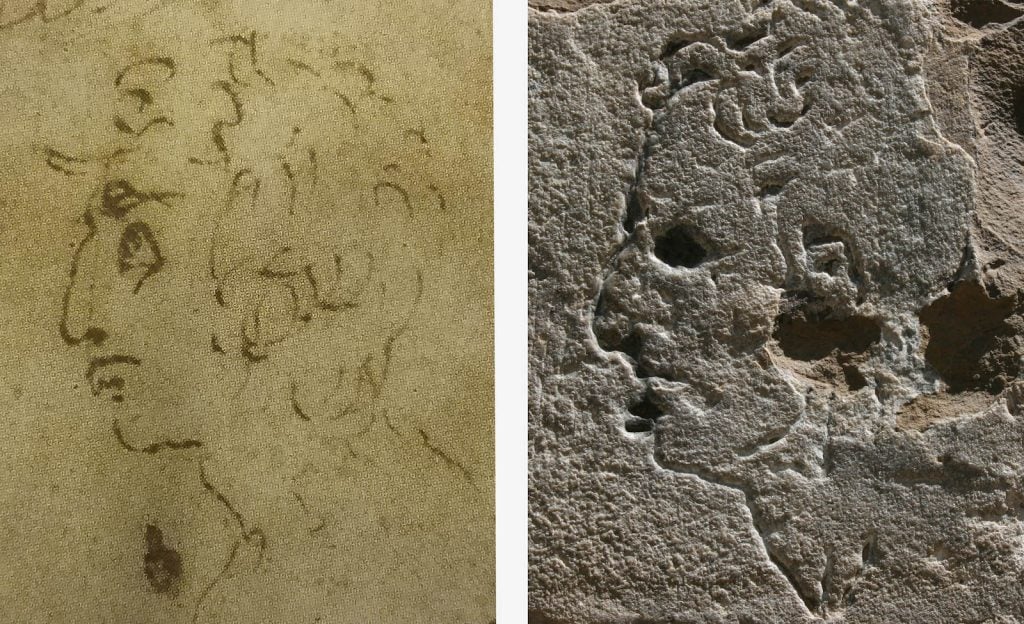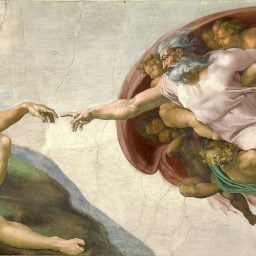A wall carving of a man’s face in profile on the façade of the Palazzo Vecchio in Florence, often attributed to the hand of Michelangelo in popular legend, may have just taken one step toward a more solid attribution to the master.
Writing in the Italian journal Art e Dossier, curator Adriano Marinazzo points out an uncanny resemblance between the Florentine carving and a face in a Michelangelo drawing in the Louvre Museum.
In the drawing, a man’s distinctive profile is tucked in with renditions of a male nude and of the Virgin Mary nursing Christ with Saint Anne. There, it has gone largely unremarked upon by scholars, says Marinazzo, a curator at the Muscarelle Museum of Art at the College of William and Mary, in Williamsburg, Virginia. The man has a strong Adam’s apple, full lips, a prominent nose and brow, and curly hair.
Marinazzo was at work on a forthcoming book and exhibition pertaining to the Sistine Ceiling when he made the discovery. “Working on this book, I was looking at this sheet from the Louvre, and I had an epiphany,” he told Artnet News. “‘Wow! This looks like the profile!’ I showed it to my wife without saying anything, ‘What do you think about this, does it look like something familiar?’ And she said, ‘It looks like the profile on the Palazzo Vecchio!’”
The drawing dates to the early 16th century, just about the time the artist was commissioned to create his famed sculpture of David, which would, in 1504, be placed next to the entrance to the city’s town hall, or Palazzo Vecchio. The carved face looks out toward the very spot where the large sculpture would have stood.
Who could the man be? Marinazzo suggests that it may be Francesco Granacci, a friend of the artist who sat on the committee that approved the placement of the David. Historian Giorgio Vasari claimed that Granacci was Michelangelo’s most beloved friend. Contemporary renditions of Granacci bear some resemblance to the carving.
The carving could hardly be the work of vandals, Marinazzo argues. It’s in a spot that would have been watched over by guards, so it would have had to be someone with official standing, like the artist. What’s more, the character of the stone makes it hard to carve, so it would take an expert like Michelangelo to achieve the naturalistic image.
A bit of writing next to the head on the Louvre drawing seems to foreshadow the way that the carving, if it is indeed an official work by Michelangelo, has gone underground. Chi dire mai chella f[osse] di mia mano, it reads, or, “Who would ever say that it was by my hand?”







